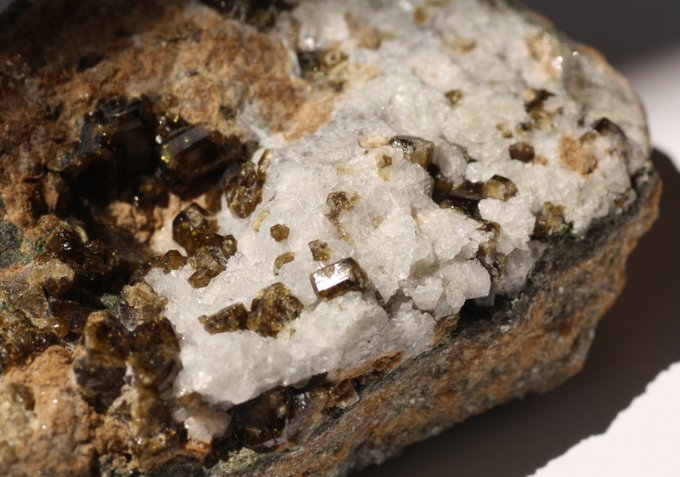MineralMondayのTwitterイラスト検索結果。 8 件
#MineralMonday #History💎 Watercolour painting done between 1797-1802 of clinoclase by Miss F. Rashleigh. It was found in the famous Wheal Gorland mine in Cornwall, where this mineral was first described in 1801
📷 by https://t.co/W0n41DcVBc
December 6, 2017, #OTD #GoogleDoodle celebrates the inclusion of the Neapolitan pizza into the UNESCO World Heritage🍕
Maybe the original Margherita pizza was inspired by the minerals found on Mount Vesuvius? Like green Vesuvianite & white Sodalite💎#MineralMonday
#OTD #GoogleDoodle celebrates the inclusion of the Neapolitan pizza into the UNESCO World Heritage🍕
Maybe the original Margherita pizza was inspired by the minerals found on Mount Vesuvius? Like green Vesuvianite & white Sodalite💎 #MineralMonday
December 6, 2017, #OTD #GoogleDoodle celebrates the inclusion of the Neapolitan pizza into the UNESCO World Heritage🍕
Maybe the original Margherita pizza was inspired by the minerals found on Mount Vesuvius? Like green Vesuvianite & white Sodalite💎 #MineralMonday
#MineralMonday Antonio de Ulloa menciona en 1748 el descubrimiento de la "platina" del río Pinto. Era un término despectivo que aludía al #platino, una plata menos valiosa que se usaba para adulterar el oro de las ricas arenas de los ríos del Chocó #Colombia. #Geología #Minerales
#8June #June8 #8Giugno #6月8日 2020
💎 Rhodochrosite (MnCO3)
stalactitic crystal habit
pics via redgallery, crystalclassics,
ebay, trous.hypotheses
#rhodochrosite #mineralmonday #gems #minerals #crystals #mineralogy #geology























